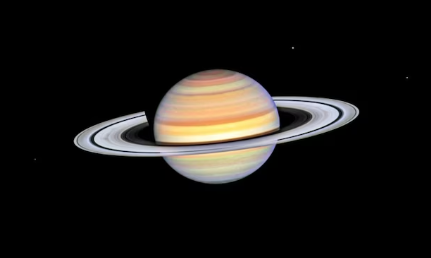Saturn’s Rings to Disappear Temporarily in March 2025
In March 2025, Saturn’s rings will seem to “disappear” when viewed from Earth. This is an optical illusion caused by the way Saturn tilts and moves around the Sun. The planet’s tilt and orbit make its rings visible at different angles over time, and for a brief period, only the thin edge of the rings will be visible, making them look like they have vanished.
The Optical Illusion Explained
Saturn is tilted at about 26.73 degrees and takes nearly 30 Earth years to orbit the Sun. Every 13 to 15 years, Saturn reaches a point in its orbit where the rings are aligned so that we see only their edge from Earth. Since the rings are so thin, they reflect very little light at this angle, making them look invisible, like viewing a thin edge of paper from far away.
This ring “disappearance” last happened in 2009 and will keep occurring in the future because of Saturn’s ongoing orbit. It’s a normal part of how we see the planet from Earth.
While this optical illusion is temporary, Saturn is slowly losing its rings for real. NASA has discovered that Saturn’s gravity and magnetic field are pulling the ring material down onto the planet, a process known as “ring rain.” The planet loses enough material to fill an Olympic-sized swimming pool every 30 minutes.
When will Saturn lose its rings completely?
Scientists estimate that Saturn could completely lose its rings in about 300 million years, although it could happen sooner based on ongoing research.
Saturn’s rings are made of billions of tiny ice and rock particles. Some are as small as dust, while others are as big as mountains. It is believed that these rings formed about 100 million years ago when two icy moons collided.
Facts About Rings of Saturn
- Saturn’s rings are mostly made of ice particles, with some rock and dust mixed in.
- The rings are very wide, stretching up to 175,000 miles, but they are less than 1 mile thick.
- They are divided into different sections, labeled A, B, C, and others, with each section having different amounts of material.
- Some of Saturn’s moons, like Pan and Daphnis, create gaps in the rings and help shape them by their gravity.
- The rings are relatively young, likely formed in the last 100 million years.
- Over time, the rings may disappear due to the effects of solar radiation.
Month: Current Affairs - September, 2024
Category: Science & Technology Current Affairs








